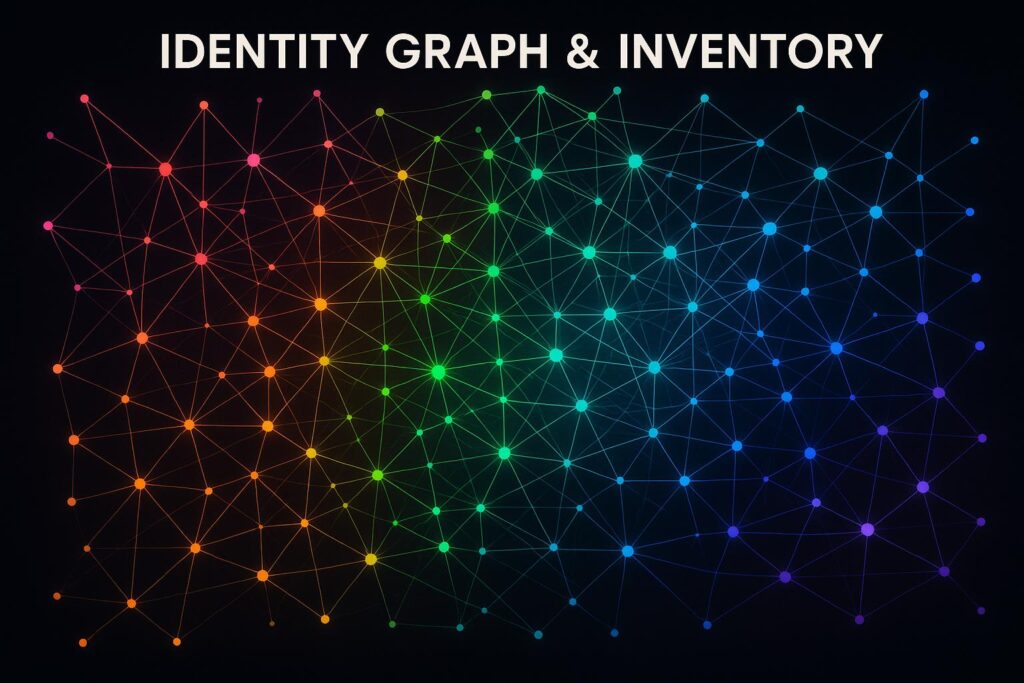Listen to the article
Silverfort introduces Access Intelligence and Identity Graph & Inventory to enhance behavioural insights and relational mapping, addressing the evolving complexities of identity risk across diverse enterprise environments and non-traditional identities.
In a strategic move reflecting the escalating prominence of identity as a critical frontier in enterprise security, Silverfort has launched two pivotal modules for its identity protection platform: Access Intelligence and Identity Graph & Inventory. These tools are designed to deepen behavioural insights, provide relational mapping, and enable context-driven control, addressing the increasingly complex challenges of identity risk across human, machine, and AI-agent identities in cloud, on-premises, and legacy environments typically elusive to traditional Identity and Access Management (IAM) systems.
Silverfort’s CEO and Co-Founder, Hed Kovetz, emphasized that identity risk today transcends mere credential hygiene, evolving into a narrative challenge involving the complex interplay and behaviour of various identities over time. Highlighting the recent surge in mergers and acquisitions within the identity and security sectors, Kovetz underscored a growing market imperative for a unified platform capable of discovering, analysing, and protecting all identities comprehensively. This shift responds to the reality of identity silos pervasive in modern enterprises; identity providers, directories, and privileged access management (PAM) tools often operate in isolation, while attackers exploit overlooked or transient access points such as dormant service accounts and cross-domain trust relationships. Silverfort’s new modules seek to address this fragmentation by enabling a narrative-style understanding of identity – mapping who accesses what, how identities interconnect, and how their permissions evolve.
Access Intelligence provides real-time visibility into actual usage patterns rather than merely listing assigned permissions. It tracks how identities move through access paths across legacy and cloud landscapes, uncovering hidden privilege chains, dormant accounts, and unused entitlements that collectively heighten security and compliance risks. This module empowers organisations to reduce “permission debt,” thereby improving security posture and operational efficiency. Complementing this, the Identity Graph & Inventory module constructs a dynamic, unified map of every identity, entitlement, and their interrelationships. This live structural view allows security teams to intuitively grasp how an individual’s identity branches across systems, which service accounts correspond to which owners, and where anomalous or overprivileged connections lie. Together, these enhancements create an integrated “map and traffic” perspective facilitating threat hunting, investigation, auditing, and the precise application of least-privilege principles.
These new capabilities integrate into Silverfort’s broader identity security architecture, which centres around its patented Runtime Access Protection (RAP) technology. RAP enables enforcement of inline access controls without the need for extensive structural rewrites or traffic proxying, offering a flexible and scalable enforcement layer across IAM, PAM, identity providers, and resource endpoints. The platform also extends protection to non-human identities—including service accounts, API roles, and AI agents—areas often overlooked by traditional tools. Silverfort’s acquisition of Rezonate expanded cloud environment coverage for non-human identity protection, while its AI Agent Security treats AI entities as fully managed identities, aligning them with human owners, calculating dynamic risk scores, and enforcing real-time policies to mitigate misuse and data leakage risks.
Despite the promise, Silverfort’s ambitious vision faces significant challenges. Integration complexity looms large as enterprises must reconcile legacy systems, custom access modules, and diverse third-party APIs to achieve the seamless visibility and control envisioned. The computational intensity of mapping sprawling identity graphs and analysing behaviour in real time across hybrid cloud, on-premises, and operational technology environments may pose scalability hurdles. Furthermore, inline enforcement demands finely tuned controls to minimise false positives and allow easy overrides where necessary, avoiding disruption to critical workflows. Equally vital is the organisational challenge of ownership and governance; effective identity security requires collaboration and buy-in across security, operations, IAM, and IT teams, which are frequently siloed and possess differing priorities.
This launch highlights the growing recognition that identity security is no longer just a backend technical concern but a central, dynamic battlefield in enterprise defence strategies. As traditional network perimeters dissolve amid cloud adoption and AI proliferation, attackers increasingly leverage identity-based paths for privilege escalation and lateral movement. Silverfort’s platform asserts that only by combining structural intelligence with behavioural insights—the complete identity “narrative”—can organisations achieve true least-privilege enforcement and proactive threat mitigation. While hurdles remain in integration and cultural adoption, these innovations mark a key step toward unified identity defence that spans human, machine, and AI agent realms, meeting the demands of the modern threat landscape.
📌 Reference Map:
Source: Fuse Wire Services


